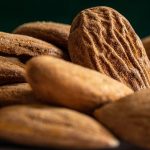
Brucellosis is a disease which affects mainly domestic animals especially cattle although there are cases of human forms of the disease. It is caused by a genus of bacteria known as Brucella which are gram-negative, aerobic, coccobacillary and non-motile microorganisms. These pathogens live within the cells and organs such as the liver and spleen (Pappas et al., 2006). They are facultative intracellular growing bacteria that have only been localised to macrophages hence their localisation to the mononuclear phagocytic system.
Brucellosis leads to abortion and stillbirths, overdevelopment of the sex organs, inflammation of the epidydimus and infertility (Xavier et al., 2009). The impact is mainly economic with loss of livestock. It is also transmissible to humans which has been an issue for farmers at various times. The main infective microorganism is Brucella melintensis. It produces a wide spectrum of clinical symptoms, including irregular fever, sweating, arthralgia, myalgia, headache and weakness.
The main method of treatment is a mixture of antibiotics over an extended period of time. The WHO recommends a 6-week course of doxycycline plus rifampin (WHO, 1986).
There is renewed interest in using plant extracts for treating the condition.
References
Doganay, M., Aygen, B. (2003) Human brucellosis: an overview. Int. J. Infect. Dis. 7 pp. 173–82 https://www.ijidonline.com/article/S1201-9712(03)90049-X/pdf
McLean, D.R., Russell, N., Khan, M.Y. (1992) Neurobrucellosis: clinical and therapeutic features. Clin. Infect. Dis. 15 pp. 582–90.
Pappas, G., Papadimitriou, P., Akritidis, N., Christou, L., Tsianos, E.V. (2006) The new global map of human brucellosis. Lancet Infect Dis. 6 pp. 91–9.
World Health Organization Joint FAO/WHO Expert Committee on Brucellosis Sixth report. (1986) World health organ. Tech. Rep. Ser. 740 pp. 1–32.
Xavier, M.N., Costa, E.A., Paixao, T.A., Santos, R.L. (2009) The genus Brucella and clinical manifestations of brucellosis. Ciencia Rural. (7) pp. 2252–60.


Leave a Reply